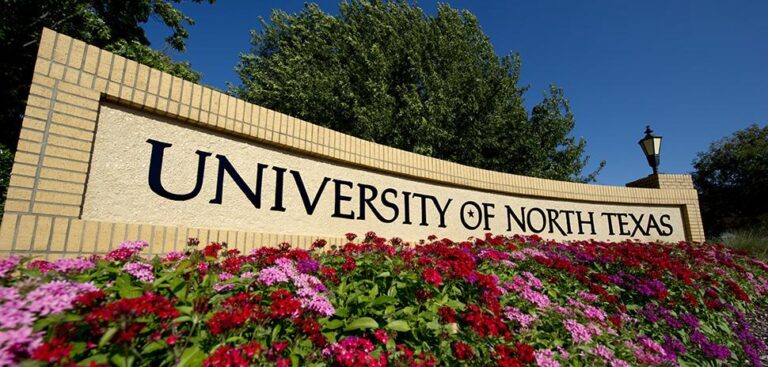North Texas colleges and universities have once again made their mark in the highly anticipated ŌĆ£2024 Best CollegesŌĆØ rankings released by Dallas News. As prospective students and families weigh their options for higher education, this yearŌĆÖs list offers valuable insights into how institutions across the region stack up in terms of academics, campus life, and value. This article provides a detailed look at the rankings, highlighting the standout campuses and key factors that influenced their positions in the 2024 report.
North Texas Campuses Make Strides in 2024 College Rankings
North Texas universities have demonstrated remarkable advancements in the 2024 national college rankings, solidifying their reputation as hubs of academic excellence. Several campuses saw notable improvements across multiple categories, including student satisfaction, graduation rates, and faculty credentials. Key institutions such as the University of North Texas and Texas WomanŌĆÖs University earned higher placements, reflecting their commitment to innovation and community engagement.
Below is a quick overview of the standout rankings for prominent North Texas campuses:
- University of North Texas: Top 100 in public universities, with a jump in research activity and student support programs.
- Texas WomanŌĆÖs University: Among the top 15 regional universities in the West, recognized for diversity and academic resources.
- UNT Dallas: Rapid growth noted in graduation rates, breaking into the top 50 regional colleges.
| Campus | 2023 Rank | 2024 Rank | Category Improvement |
|---|---|---|---|
| University of North Texas | 110 | 95 | Public Universities, Research |
| Texas WomanŌĆÖs University | 18 | 14 | Regional Universities West, Diversity |
| UNT Dallas | 58 | 45 | Graduation Rates, Student Success |
Key Factors Driving Success for North Texas Institutions
North Texas institutions have surged ahead by prioritizing a blend of academic excellence and community engagement. Key drivers include robust faculty expertise, state-of-the-art facilities, and a commitment to fostering diverse and inclusive environments. These campuses have also emphasized innovative programs that align with industry demands, ensuring students graduate notably prepared for competitive job markets.
Additionally, investment in student services like career counseling, mental health support, and experiential learning opportunities has been pivotal. Below is a snapshot of critical success factors identified across top-ranked North Texas schools:
- Strong alumni networks providing mentorship and job placement
- Cutting-edge research initiatives attracting funding and talent
- Comprehensive internship programs within Dallas-Fort Worth metroplex
- High retention and graduation rates bolstered by personalized academic advising
| Factor | Impact Level | Example Institution |
|---|---|---|
| Faculty Expertise | High | University of North Texas |
| Student Support Services | Medium | Texas Woman’s University |
| Career Placement Programs | High | Southern Methodist University |
| Research Funding | Medium | University of Texas at Dallas |
Areas for Improvement Identified in Campus Evaluations
Despite notable achievements, North Texas campuses revealed several areas needing attention to elevate their rankings. Common concerns revolved around student retention rates and graduation timelines, with some institutions struggling to keep students enrolled through to degree completion. Additionally, feedback highlighted gaps in career services, where students often felt unprepared for the job market or faced limited internship opportunities that align with their fields of study.
Infrastructure and campus amenities also featured prominently among improvement targets. Several campuses noted aging facilities that lag behind modern standards, affecting both student satisfaction and recruitment efforts. Others are working to enhance their technological resources, recognizing the growing demand for smart classrooms and robust online learning platforms. Below is a summary of key improvement areas and examples from specific campuses:
| Improvement Area | Examples of Campus Challenges |
|---|---|
| Student Retention | Lower rates at mid-sized universities |
| Career Services | Limited internship placements |
| Facility Upgrades | Outdated lecture halls and labs |
| Technology Access | Insufficient smart classroom integration |
Expert Recommendations for Prospective Students Choosing North Texas Colleges
Choosing the right college in North Texas requires more than just reviewing rankings; it demands a strategic approach based on individual goals and campus strengths. Experts advise prospective students to prioritize institutions that offer strong academic programs aligned with their career aspirations, but also to consider opportunities for internships, research, and community engagementŌĆöcrucial for building a competitive portfolio. Beyond academics, factors such as campus culture, class sizes, and support services can heavily influence both academic success and personal growth during college years.
Key considerations recommended by education specialists include:
- Evaluating faculty expertise and availability
- Reviewing graduation and job placement rates
- Exploring scholarship and financial aid options
- Visiting campuses to assess environment and facilities
- Engaging with current students and alumni
| Recommendation | Why It Matters |
|---|---|
| Internship Opportunities | Enhances practical skills and employability |
| Faculty Accessibility | Supports personalized learning and mentorship |
| Financial Aid Availability | Ensures affordability and reduces student debt |
To Wrap It Up
As the 2024 rankings from Dallas News highlight, North Texas campuses continue to demonstrate a commitment to academic excellence, innovation, and student success. These rankings offer prospective students and their families valuable insights as they navigate the college selection process. With a diverse range of institutions earning recognition, the regionŌĆÖs higher education landscape remains a dynamic and competitive environment. As colleges and universities adapt to evolving educational demands, their standings in future rankings will be closely watched by educators, policymakers, and communities alike.







